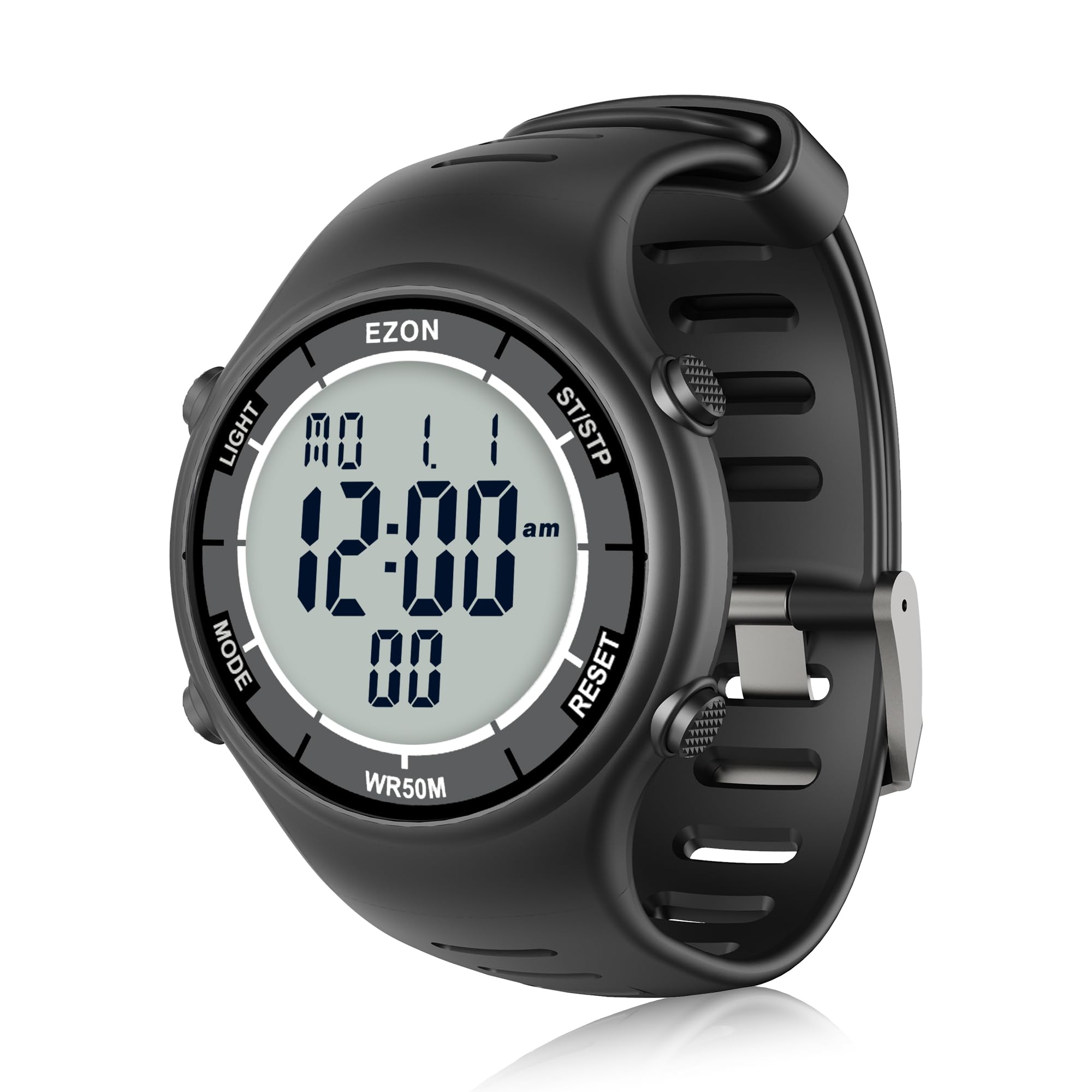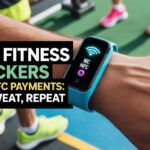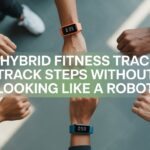Fitness trackers have basically become our silent coaches, tagging along everywhere and counting every step—even when we’re just pacing around, trying to choose lunch. Sure, these wrist gadgets are great for tracking walks and runs, but not every tracker can handle the wild, start-stop world of interval training. This workout style is all about quick bursts of effort and short rests, so we really need a tracker that can keep up—without getting confused and thinking we’ve just taken a hyperactive nap.
With so many trackers out there, it’s tempting to think they all work the same way. Spoiler: they absolutely don’t. The main things we look for? Accurate heart rate sensors, timers for intervals, solid battery life, and bands that don’t turn into wrist torture halfway through a workout.
Special features like waterproofing, being able to see the screen in sunlight, and easy app syncing can really make or break the experience—especially if we spend ten minutes just trying to find the pause button.
We tested a bunch of fitness trackers to figure out which ones actually “get” the sweaty, timer-filled chaos of interval training.
Best Fitness Trackers for Interval Training
We’ve all tried to time our bursts with a phone stopwatch, only to wind up sweaty and more confused than when we started. Luckily, the best fitness trackers can handle the madness of interval training without breaking a sweat. Here are our favorite picks for keeping us on track with every round.
Fitbit Inspire 3
If we want to survive a HIIT workout without crying, the Fitbit Inspire 3 makes a pretty solid workout buddy.
Pros
- Tracks heart rate and interval training automatically, so we can brag about it later.
- Light and comfy—we basically forget it’s strapped on.
- Battery lasts so long, we might lose the charger before it runs out.
Cons
- GPS needs our phone, so it’s less helpful if we leave the phone at home.
- Premium features start costing money after the free trial.
- The tiny display can disappear under our thumbs.
We wore this little gadget and honestly, it feels like a feather compared to chunkier trackers. Tracking intervals is easy since Inspire 3 recognizes most basic workouts on its own.
It’s simple to check heart rates on the fly. We can finally stop guessing if we’re working hard or just sweating for no reason.
We love the clear interface and the color screen, but during a brutal interval, that small display is tough to read. Notifications make it easy to dodge calls from the group chat without losing our pace.
The sleep and stress tracking give us something else to obsess over besides our burpee count.
Because the GPS relies on our phone, we have to bring our mobile device for proper run tracking. That’s a bit annoying for anyone who likes to leave stuff behind. Still, the Inspire 3 is light, reliable, and great for interval training—especially if you’re forgetful about charging.
Just be ready for that subscription pitch when the free trial ends!
Gymboss Timer & Stopwatch
If you want an easy way to stick to those brutal intervals without your brain melting, the Gymboss might be your new workout buddy.
Pros
- Fits in a pocket or clips to clothes—no excuses for skipping rounds.
- The beep and buzz notifications are loud and shaky enough to cut through blasting music.
- It just keeps going through cycles, so we don’t have to tap anything while we sweat.
Cons
- The buttons can be stubborn—sometimes we get a mini thumb workout before HIIT even starts.
- Needs a AAA battery, which is great until we realize we never have spares.
- There’s no app or phone connection, so tracking workouts is all on us.
We love how compact this timer is. It doesn’t dangle, flop, or swing around during burpees. It clips on tight and actually survives our messiest gym bags.
You set your intervals right on the device, and they keep looping until we’re done—or totally wiped, whichever comes first.
The vibration and chime alerts are our favorite part. Even if we’re dying between sprints, this thing still gets our attention.
On days we forget to buy AAA batteries, we get a little creative. The Gymboss doesn’t sync with a phone or show fancy graphs, so if we want to brag, it’s back to pen and paper.
Sometimes, those side buttons act like they’ve never heard of leg day—pressing them can be a challenge. But when it works, it’s a great timer for interval runs, circuits, and even sneaky TV push-up contests.
If you just want a timer to do its job, the Gymboss Interval Timer & Stopwatch definitely deserves a spot in your gym bag—even if you accidentally set it off and scare the dog (again).
EZON Digital Interval Watch
If you’re after a no-fuss, wallet-friendly tracker for interval workouts, this watch keeps things simple and stress-free.
Pros
- Timer built for interval training—warm-up, workout, rest, repeat—without making us read a manual every time.
- Huge, clear numbers on the screen, so even with post-sprint tunnel vision, we can read our lap times.
- Waterproof enough for sweat, rain, or a dramatic sink soak.
Cons
- Lap tracking stops at 10, so marathoners might want more memory.
- The band can feel a bit fragile if we get rough or have Hulk-sized wrists.
- No Bluetooth or app, so syncing with our phone is just a dream.
When we tried this EZON watch, the comfort stood out right away. The strap felt light, and the numbers were clear—even after a sprint left us gasping.
Setting up intervals was easy. Just press, hold, and off we go.
The dedicated timer made interval days smoother, handling sets, repeats, and rest periods. We switched between swimming laps and jog sprints without worrying about water ruining the watch—unless we tried deep-sea diving (not the best idea).
The glow-in-the-dark backlight helped us check splits in a dim gym or on a dusk run.
No charging cables is a real plus. We love not having to remember another charger.
There’s no smart notifications, and the lap memory won’t work for ultra marathons, but for under $20, we get a focused tool built for workouts. Perfect if you want to skip complicated fitness tech and just get moving.
AKUMAKA Health Fitness Tracker
If you want a no-nonsense fitness tracker that keeps life simple and doesn’t make you pay extra for its best features, this one actually delivers.
Pros
- Totally free app with zero sneaky fees
- Tracks heart rate, sleep, and more all day
- Battery lasts longer than most of our workout streaks
Cons
- No screen—so we can’t sneak glances mid-burpee
- Limited to notifications only with vibrations
- Looks more like a fitness bracelet than a gadget
We strapped this AKUMAKA band on and, honestly, almost forgot it was there (except when it buzzed for a hydration reminder). The app is free—finally, a tracker that doesn’t hit us with hidden subscription fees. That alone makes us want to do a happy dance.
Tracking intervals felt easy since the band handled heart rate and steps without any annoying manual input. We liked setting daily goals and seeing how close we got.
It’s waterproof, so it even survived sweaty HIIT and a surprise rain shower.
Let’s talk about the design: no screen, just business. If you need to watch your stats in real-time while lunging, this isn’t it.
But for those of us who like things clean and focused, it does the job and stays out of the way. Ten days on a single charge had us wondering if we accidentally got a magic battery.
We shared our results with family so they could see just how much—or how little—we move.
The AKUMAKA Health Fitness Tracker is great if you want health data, no monthly bills, and an excuse to skip screens. If only it could remind us to stop snacking after midnight.
VUHIGIB Fitness Tracker
If you want to power through intervals without missing a beat (or a notification), you’ll want to check this one out.
Pros
- Tracks heart rate, blood oxygen, and sleep—almost bionic, right?
- Tons of sports modes keep our workouts interesting
- Light enough to forget we’re even wearing it
Cons
- GPS relies on connecting to our phone
- Bright screen can be blinding during late-night snacks
- Only comes in one size—no room for our bulging biceps
For interval training, this VUHIGIB tracker feels like a tiny (and very polite) coach living on our wrist. We loved glancing down mid-burpee to catch our heart rate, or checking how many calories we burned after one of our desperate sprints.
Switching between sports modes made us feel like real athletes, even if our yoga looked more like a nap with extra steps.
We barely noticed the slim band during high knees or mountain climbers, but the display was bright and easy to read. The sleep tracking feature had us questioning all our life choices after showing how restless we were on pizza night.
For anyone on an interval training streak, having reminders for water, movement, and the occasional text from mom kept us more motivated than a playlist packed with ‘80s hits.
The GPS needs our phone, so long runs turned into a game of pocket-or-hand. But with a battery that lasted all week and waterproofing that saved us during clumsy water breaks, this tracker handled our toughest workouts—and snack emergencies—with style.
IMFRCHCS Fitness Tracker Starlight
If you want a good value tracker that can handle endless interval workouts and still look decent at dinner, this one’s an easy pick.
Pros
- Bright, easy-to-read screen—even when you’re gasping for air
- Tons of workout modes that make you feel like you know what you’re doing
- Lightweight and comfy enough to forget you’re wearing it, until it buzzes
Cons
- Step tracking acts up sometimes and isn’t always accurate
- Not a great fit for app lovers or those who crave deep third-party integrations
- Navigating 130+ fitness modes can feel like its own workout
The large touch display makes checking stats during a set almost effortless. No more awkward wrist twisting just to see your heart rate in the middle of a sprint.
Setup felt simple (which is a relief if you lose instructions in five minutes like me). The sheer number of sport modes covers almost anything you can throw at it, plus a few you’ve probably never tried.
It’s slim and light, so it won’t get in the way during fast intervals or stretching on the mat. The step counter does its own thing now and then, but for daily intervals, it tracks well and throws in perks like sleep tracking and notifications.
If you want serious bells and whistles, you’ll want to pay more. For most of us, though, this is an affordable, no-nonsense tracker that keeps you moving.
Mindrose Fitness Watch
If you’re after a fitness tracker for interval training that actually keeps up, this one checks nearly every box.
Pros
- Stacked with sports modes—there’s probably one for competitive hopscotch
- Clean, bright display makes stats easy to see, even mid-sweat
- Wild battery life—charging once a week feels almost magical
Cons
- No standalone GPS, so you’ll still need your phone for mapping
- Alerts can get chatty if you don’t tweak settings
- The watch strap style won’t be everyone’s favorite
Wearing the Mindrose Fitness Watch felt like strapping a personal coach to my wrist. I cycled through more interval modes than I thought existed, and it tracked everything.
Heart rate and oxygen updates kept me on target, and burning calories felt a bit more satisfying when the watch celebrated with me. Notifications pop up quickly, which is great—unless your group chat goes wild while you’re sprinting.
The screen stays readable, even when you’re bouncing around on the treadmill. Customizing the watch face is surprisingly fun—swapping photos for a little extra motivation made me smile.
Battery anxiety? Not here. I got a full week, with juice left for another short workout or two.
The only real downside: if you want to run without your phone, there’s no built-in GPS. Still, for daily training and keeping tabs on health stats, it’s a dependable pick that adds some color to your wrist—even if your running form is questionable.
VUHIGIB Interval Master Tracker
If you want a fitness buddy that quietly judges you for skipping leg day, this little tracker fits the bill—just don’t expect it to laugh at your jokes.
Pros
- 24/7 health tracking—makes you feel like a high-tech athlete
- Ridiculously long battery life (I charge it way less than my phone)
- Over 100 sports modes, so you can track just about anything
Cons
- No built-in GPS—your phone still does the heavy lifting
- Screen size is great, unless you forget your glasses
- App won’t win design awards, but it works
I tried out the VUHIGIB Interval Master and honestly enjoyed how it tracked everything—from my wobbly yoga planks to failed breathing exercises. Switching between sports felt easy, and it cheered me on (in its own quiet way) whether I was cycling, running, or just trying not to trip.
The battery almost feels like magic. After a quick charge, I wore it for nearly a week without stressing about it dying mid-squat.
Wearing it all day felt comfortable. I barely noticed it during sweaty sprints or lazy desk slumping.
A neat trick: if I forgot to set timers or wanted to check the weather while burning my lunch, the voice assistant jumped in without fuss. Notifications and calls are handy, though talking into my wrist still feels like a spy movie.
The VUHIGIB packs in a lot of features without costing an arm, leg, or ankle weights.
Moremore Fitness Tracker
If you want a simple fitness tracker with plenty of modes and long battery life but don’t care about GPS or fancy extras, the Moremore tracker is a solid, budget pick.
Pros
- Charges quickly and lasts all week—no daily scramble for the cable
- Tracks 25 sports, so even roller skating gets some love
- AMOLED touch screen actually looks sharp for a budget watch
Cons
- No built-in GPS, so outdoor runs need your phone
- Pink band picks up grime too easily (mine went from “cotton candy” to “parking lot chalk” fast)
- Touch navigation takes some patience—tap gently
Testing this watch, I noticed how light it felt right away. It didn’t bug me during sweaty intervals, and the bright screen stayed readable, even when I was gasping between sprints.
Setting water break reminders became my favorite feature—turns out, I really need them after pretending I’m a pro athlete. Having 25 workout modes was a blast.
I tried interval running, then switched to yoga to recover (or, let’s be honest, collapse and stretch). Swapping between exercises is simple.
If I remembered to log my session in the app, I got plenty of data about steps, heart rate, and calories. Notifications worked for calls and messages, but I had to tinker with app permissions to get them going.
No onboard GPS means you’ll need your phone for accurate outdoor tracking. And the pink band? Next time, I’m picking black.
LIVIKEY Fitness Tracker Watch
If you want an affordable, straightforward tracker for interval training, this one covers the basics without breaking the bank—or your spirit.
Pros
- Monitors heart rate and sleep, day and night
- Waterproof, so you can sweat or splash worry-free
- Notifications help you catch important texts and memes
Cons
- No built-in GPS, so your phone still needs to tag along
- Display feels tiny when your arms turn to jelly
- App setup took more effort than I wanted
I strapped on the LIVIKEY tracker and set out to tackle my interval sessions. The heart rate tracking kept me in the right zone.
Even after a pile of burpees, it stuck with me—sweat, jumps, and all. The waterproof feature made it easy to rinse off or just forget about in the shower.
Checking texts and calls on my wrist saved me from fumbling with my phone between sprints. Sleep tracking gave me some insight into why I felt like a zombie on rest days.
Charging was easy, and one charge lasted the week. I did wish for a bigger screen—reading splits during fast circuits turned into a squinting contest.
And for mapping runs, I still had to bring my phone. For the price, though, the LIVIKEY Fitness Tracker Watch nails the basics and doesn’t demand much—except maybe your email address for the app.
Buying Guide
Picking the best fitness tracker for interval training shouldn’t feel like a workout in itself. Let’s keep it simple and focus on what actually matters.
First up, let’s check out some essential features. Here’s a quick table so you don’t have to dig around for the basics:
| Feature | Why We Need It |
|---|---|
| Timer | For timing those sweaty intervals |
| Heart Rate | To see if our hearts survive |
| Water Resistance | Because sweat happens |
| Battery Life | Fewer charges, more workouts |
| Display | So we can actually read it |
Look for trackers with a reliable interval timer. If you can set up custom intervals, that’s a huge plus.
Nobody wants to fumble with tiny buttons while gasping for air. Trust me, it’s not a good look.
Your tracker should feel comfortable on your wrist. If it pinches or distracts you during burpees, it’s just not worth it.
Adjustable straps make a big difference here.
Don’t forget about app compatibility. The best trackers sync up with your phone, so you can check your stats without a headache.
If you love training outdoors, GPS can help you keep track of your distance. But if you’re just sprinting in your living room, you can probably skip it.
You want something that’s simple to use. If it takes fifteen taps to start an interval, honestly, who’s going to bother?
And yeah, keep your budget in mind. There’s no point in buying the fanciest tracker if you can’t afford new running shoes afterward.
















